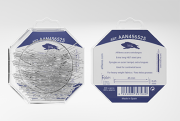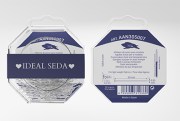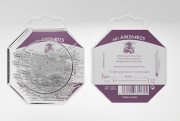With over 80 years of experience, Folch is the largest high grade straight pin manufacturer in Europe. Our expertise in the pin industry makes us able to provide different types of pins that go from safety pins for the clothing industry to safety pin crafts, earrings and jewelry for hobby and creative projects.
The 7 Wonders about lace pins is all that you ever wanted to know about pins. So how many types of needles and pins are in the market? How do you identify a straight pin? How about dressmakers’ pins or head pins? There are seven parameters that any pin needs to be identified. We are going to introduce them to you now.
Lace Pins 7 Wonders:
ONE: Wire as a raw material and its strength - The wire strength depends on its chemical composition, the manufacturing process and the final diameter. Regardless of the application (lace pins, dressmakers pins or even map pins), the predominant wire materials will give us steel pins, brass pins and stainless steel head pins.
- The wire strength depends on its chemical composition, the manufacturing process and the final diameter. Regardless of the application (lace pins, dressmakers pins or even map pins), the predominant wire materials will give us steel pins, brass pins and stainless steel head pins.
Steel (A) it is an alloy with a high carbon percentage. With hard steel pins, if you bend them they will break although they have the highest bending resistance if you bend them low.
Mild Steel (F) is an alloy with a low carbon percentage. The mild steel pins are not commonly used for lace makers applications.
Stainless Steel Pins (AI quality AISI 304): The stainless steel wire is the most valuable of the all because of their lustrous appearance, high corrosion resistance, and bending resistance. These parameters will never change and through their high strength, it is possible to have great lace or dressmakers pins with long lengths and thin diameters which make them excellent for meeting lacers’ requirements.
Brass (LL) is an alloy of Copper (64%) and Zinc (37%). It is rustproof and its natural color is similar to gold.
TWO: Diameter
This is one of the most important items in the list. Some of the other parameters are related with this one like the strength that is lineally direct. The thin pins are the most appreciated by the lacers. To choose the right pin diameter depends on thread being used, the lace design, specific patterns, and the lace technique. Our minimum pin diameter is 0.40 mm and the maximum is 1.20.
THREE: Length
This is the easiest parameter to check. Long needles and pins are also highly appreciated. Depending on the lace technique you will want to use long pins or short pins. Usually the techniques that need pins than longer than 30 mm have to be worked with vertical pillow, and the techniques that needs pin of 10, 16, 17, 18, or 20 mm use round or horizontal pillow.
FOUR: Point
This is the most important part of any straight pin. The pin should slide into your pillow easily if the point is ground and polished to a fine point like our Jabali Pins’ points. Depending on the pin’s shape, we have short point, blunt point, and standard pin points with the latter being the most common point for lace pins. The point length is three times the pin diameter.
FIVE: Head
We need three parameters to define head pins: the shape, the material, and the size.
-
Shape of the head pins: flat, disk, round, flower, or dipped
-
Material of the head pins: the same as the pin wire, plastic, nylon, glass...
-
Size: the head pins’ size on common pins depends mainly on the wire diameter using this relation; head diameter = 2.5 wire diameter. For specific patterns and techniques, we might use a pin with small head of 1a 1.2 mm.
SIX: Finish
Finish is determined by the kind of surface and the corrosion resistance.
Nickel Finish (n): this is a covering over the needles and pins. The nickel plating gives the needles and pins a bright finish and a high resistance for corrosion if the pin is made with brass, and acceptable corrosion resistance if the pin is made with steel.
Inox Finish: this finish is polished until it is mirror-like using a proprietary finishing process, is only used on stainless steel pins, and has the highest resistance to corrosion.
Gold Finish (D): this is a chemical polish that allows the wire to appear with a brass color, and has a low resistance to corrosion.
SEVEN: Bending resistance
The bending resistance is the capacity of a pin to recover its straight shape after being pushed into fabric or any other material. Safety and dressmakers pins have been developed with better performance than ever due to new fabrics appearing in the market.
This property depends on some of the other six wonders like the wire’s material, strength, diameter, length, and plating. We have learned that lace pins need to be long pins with the smallest diameter possible and a high bending resistance as it is important that the pin will not bend or flex.
When it is pinned into the hard pillow, for that reason, we have created a scale so lace pins will have their own bending resistance value. That way, each lacer can find their favorite style of pin depending on the lace technique and their level of experience.
BENDING RESISTANCE
Minimum Maximum
 Jabali pins the best pins for lace makers since 1924
Jabali pins the best pins for lace makers since 1924






